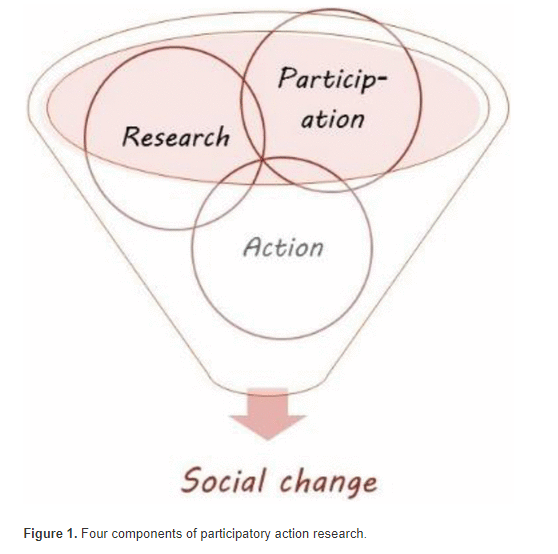By Carson Peters
In Part 1 of this blog we talked about how protest photos from the BLM convey stories of activism; showcase change-makers; evoke feelings of solidarity, resistance, and advocacy; and demonstrate political action. By illuminating voice and engaging communities, these photos can reframe the narrative of BLM through this powerful visual tactic.
How does Photovoice contribute to the conversation of BLM protest photos? Let’s explore this further by delving into how several theories and the framework of Photovoice reflect social justice approaches in BLM protest photos.
Feminist Theory: This theory positions women at the forefront within the dominant and marginalized social discourses. By rejecting institutionalized pedagogies (historical, economic, political, and social structures), feminist theory allows women to advance social change (Lienbenberg 2011). Photovoice uses this theory for the collaboration and inclusion of women to foster empowerment and liberation (Lienbenberg 2011; Wang et al., 1996). BLM is a movement created by three women who sought to be change-makers for issues affecting their community. Both Photovoice and BLM empower women to be voices and leaders within their communities, discourse, and discipline.
Paulo Freire’s critical consciousness theory creates awareness in communities and illuminates the importance of social change. This pedagogy describes the impetus for using photos to illustrate how social and political realities shape people’s lived experiences (Lienbenberg 2011). Critical consciousness is when individuals gain awareness of oppressive structures, where communities have the propensity to mobilize against these systems of power. (Lienbenberg 2011). The Freire theory reflects ideals of BLM where the “praxis for change and collective action of the community work together to create meaningful change” (Lienbenberg 2011).
The principles of photography expand upon how photography can be a visual tool for creating representation, advocacy and social change. Wang and Burris (1994) explore the “essentiality of documentary photography for narrative research; where photos critically reflect lived experiences, and fundamentally represent “signifiers of culture, values and expectations of individuals, communities, and society” (Lienbenberg 2011). In doing so, Photovoice uses this framework to evoke policy change. BLM uses protest photos and visual methods to shape a narrative for social change and advocacy. Through the tactics of grassroots and community member-led network, the ideals of agency and voice are exercised to foster meaningful impact in communities. This often occurs through the lens of political reform or policy.
Photovoice utilizes the community-based participatory action research (CBPAR) model which emphasizes the “democratization of knowledge development as a component of social justice” (Lienbenberg 2011). CBPAR recognizes the mobilization in communities, where the inherent knowledge, realties, needs and expertise are valued (see model pictured below), and social transformation can take place. Both Photovoice principles and BLM engage communities, promote grounded experiences and knowledge; and value how participation, and action, lead to social change/justice.

Within BLM protest photos, there are ethical considerations of ownership, usage, and consent, which also hold relevancy in Photovoice projects. The notion of ownership includes the misuse or misrepresentation of photos, which can be taken out of context or abused from the original intentionality. Thus, there is a need to ensure that individuals “sharing the messages best understand the language and what needs to be said” (The Guardian 2020). Ethical considerations of usage emerge since some photos may receive more recognition or have more relevancy (Brehman 2016). There is a pressing need for BLM protest photos to be representative and authentic. This ethical consideration is discussed in many Photovoice projects, as well in the context of how to best to share and which photos should be recognized. Consent is also an ethical consideration, since the identity of the protestors should be protected if consent is not granted, which is also the case for Photovoice projects. Overall, the ethical considerations of BLM protest photos represent ethical considerations that should be considered for Photovoice projects.
The ideals of community, participation, advocacy, and agency are illuminated in visual methods. At the heart of what we do at PhotovoiceWorldwide LLC is to create awareness, foster dialog, bring real lives into practice and policy conversations, and plant seeds for change within the global community. This photovoice method ideal complements how BLM protest photos recognize the power of using visual methods to enhance participatory approaches and decision making among policy makers. These visual method approaches demonstrate the power of advocacy in being change leaders in global communities and mobilizing change agents. The photovoice method and BLM protest photos are examples of ways to empower communities by providing opportunities to use their collective voices and share/value an individual’s and a group’s lived experiences to create positive impact in global communities.
So, how can you get involved?
- Create a photobook, photo journal, or photo essay about social justice initiatives in your local area. Make sure to align with ethical considerations. Reflect on this project.
- Listen to this Ted Talk Playlist about the Power of Protest.
- Reflect on: What role can photographs play in revealing injustice? What role can they play in encouraging people to act against injustice?
- Read about Teaching Tolerance
Sources:
NA. (2020). Black Lives Matter. https://blacklivesmatter.com/about/
Bell, Brandon et. al.(2020). Capturing the cry for change: photographers on the BLM protests. The Guardian. https://www.theguardian.com/media/2020/jun/12/capturing-the-cry-for-change-photographers-on-the-blm-protests
Brehman, Caroline. (2016). An Analysis of the Iconic Images from the Black Lives Matter Movement.” Elon University. https://www.elon.edu/u/academics/communications/journal/wp-content/uploads/sites/153/2018/05/07_Brehman.pdf
Coscarelli, Joe. (2020). #BlackoutTuesday: A Music Industry Protest Becomes a Social Media Moment. New York Times. https://www.nytimes.com/2020/06/02/arts/music/what-blackout-tuesday.html
Ghreichi, Christine. (2016). Black Lives Matter and Social Justice.” University of Minnesota. https://cla.umn.edu/news-events/story/black-lives-matter-and-social-justice
Hanna, Philippe. (2016). Conceptualizing social protest and the significance of protest actions to large projects. The Extractive Industries and Society.
https://doi.org/10.1016/j.exis.2015.10.006
Liebenberg, Linda. (2018). “Thinking Critically About Photovoice: Achieving Empowerment and Social Change International Journal of Qualitative Methods. https://doi.org/10.1177/1609406918757631
Patrick, Stewart. (2020). “Black Lives Matter—for Social Justice, and for America’s Global Role”. World Politics Review. https://www.worldpoliticsreview.com/articles/28839/black-lives-matter-for-social-justice-and-for-america-s-global-role
Speltz, Mark. (2016). How Photographs Define the Civil Rights and Black Lives Matter Movements. Time Magazine. https://time.com/4429096/black-lives-matter-civil-rights-photography/
Taylor, Alan. (2020). Images From a Worldwide Protest Movement. The Atlantic. https://www.theatlantic.com/photo/2020/06/images-worldwide-protest-movement/612811/
